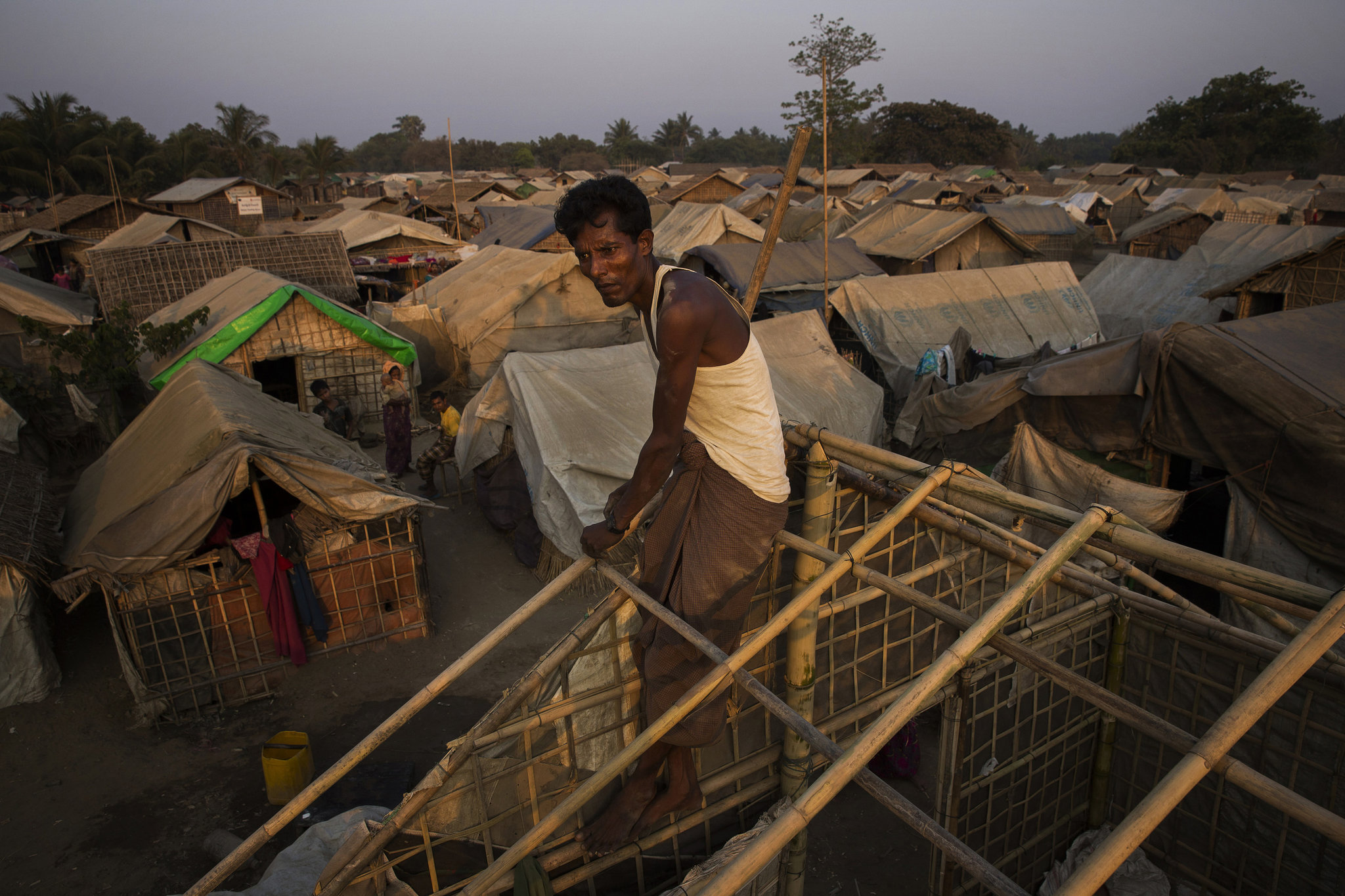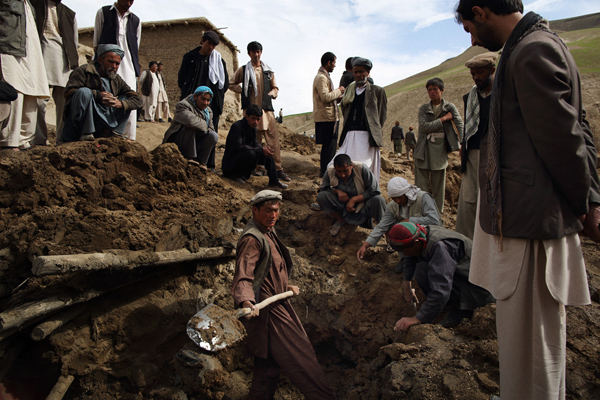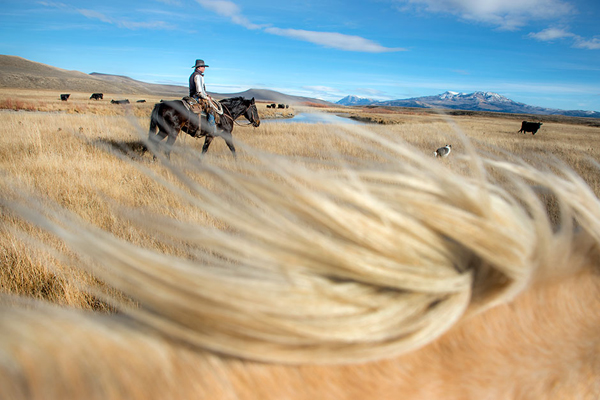
Features and Essays
Adam Dean: Death Stalks Muslims as Myanmar Cuts Off Aid (New York Times) Humanitarian crisis is unfolding among the Rohingya, a Muslim minority that Myanmar’s Buddhist-led government has increasingly deprived of the most basic liberties and aid even as it trumpets its latest democratic reforms
Ian Teh: Yellow River: China’s Environmental Sorrow (MSNBC) Teh chronicles rising pollution levels in China’s Yellow River, the second largest river in Asia, and the toll it has taken on the surrounding landscape
Chris McGrath: Devastation Persists in Tacloban Six Months After Typhoon (Time.com) Philippines
Moises Saman: Return to Iraq (The New Yorker’s Photo Booth) Saman returned to Iraq for the first time since 2010
Samuel Aranda: Iran — The Waiting Game (Panos Pictures) Aranda goes on a journey through Iran at a time of both stagnation and change
Scout Tufankjian: Global Armenian Diaspora (New York Times Lens blog) Tufankjian has been traveling the world photographing Armenian communities large and small, where traditions endure amid diversity

Andrew Quilty: Afghanistan Landslide (Time.com) At least 2,100 are assumed dead after two catastrophic landslides buried hundreds of homes in the Argo district in the mountainous northeastern state of Badakhshan
Carolyn Cole: In Afghanistan, childhood is often a full-time job (Los Angeles Times) It’s estimated that at least a quarter of Afghan children work, despite labor laws that forbid it
Jošt Franko: Child Refugees in Lebanon (VII) More than two million Syrians have fled their country’s civil war, now entering into its fourth year, to seek shelter in neighboring countries such as Jordan, Lebanon, Turkey and Iraq. At least half of the refugees living over the Syrian border—roughly 1.1 million—are children
Antonin Kratochvil: Razed Roma Enclave in Eforie, Romania (Wall Street Journal) Abandoned schoolhouse provides shelter after city demolishes dwellings
Jošt Franko: Disappearing Slovenia (The New Yorker’s Photo Booth) Herders in Slovenia’s Velika Planina, a traditional community in the foothills of the Kamnik-Savinja Alps
Mauricio Lima: Behind the Masks of Pro-Russian Militants in Ukraine (New York Times)
Davide Monteleone: Revolutionary Relics (The New Yorker’s Photo Booth) Monteleone documented the everyday iconography of the revolution
Maxim Dondyuk: The Crimea Sich (Slate) Military training camp for boys in Crimea
William Daniels: Years After Chernobyl, Building Progress (New York Times)
Siegfried Modola: With armed escort, Muslims escape C.A.R. to safety in Chad (Al Jazeera America) African Union forces evacuate 1,000 Muslims on a four-day journey from Bangui to the border near Chad
William Daniels: Amid the Atrocities (LightBox) Daniels captures Central African Republic at a moment of doubt, fear and uncertainty as a series of bloody clashes and violent attacks have plunged the country into one of its darkest periods in modern history
Mark Peterson: NRA convention draws gun-lovers and vote-seekers (MSNBC) Tens of thousands of firearms enthusiasts gathered in Indianapolis over the weekend for the National Rifle Association’s annual meeting | Peterson’s website and Instagram
Daniel Arnold: End of the Line (The New Yorker’s Photo Booth) New Yorker asked the Arnold to ride several New York subway lines to the last stop, and to document the journeys
Ryan Pfluger: The Tale of Two Schools (New York Times Magazine) Fieldston and University Heights are in the same New York borough but worlds apart. How much understanding between their students can a well-told story bring? Portraits by Ryan Pfluger
Thomas Prior: A day in the life of a divided school (MSNBC) The dramatic rise of charter schools in urban communities over the past decade has been fraught with debate, controversy and consternation. Photographer Thomas Prior recently spent some time in Harlem at the school building shared by PS 149 and Harlem Success Academy 1, and documented a day in the life of a school building divided
Landon Nordemann: Kentucky Derby (MSNBC) Photos of the spectacle
Richard Gilligan: DIY Skateparks (LightBox) Gilligan traveled around Europe and the United States photographing these self-built skate spots for a new book by Prestel called DIY / Underground Skateparks
Jessica Lehrman: Hip-Hop’s New New York (New York Times) The underground rap world of New York City
Camilo José Vergara: Detroit by Night (LightBox) Photographer finds himself drawn to Detroit in the darkest hours of the night
Nicole Tung: The Code for Farewell (Al Jazeera America) Saying goodbye to the last Seminole code talker
Rodrigo Abd: Illegal gold mining in Peru (Guardian) Peru is tackling illegal gold mining. Madre de Dios state has an estimated 40,000 illegal miners, most of whom are poor migrants from the Andean highland, and their work accounts for about 20% of Peru’s gold exports. Associated Press photographer Rodrigo Abd documents the frantic work of the miners up to the moment when government forces arrived to put them out of business
Sebastiano Tomada: Life Inside Rio’s Favelas (CNN Photo blog) In anticipation of the World Cup soccer tournament, which Brazil hosts in June, military police have stormed dozens of slums in Rio de Janeiro to push out drug gangs and “pacify” the neighborhoods. Tomada recently spent time with the police and those who live in these favelas
Articles

Daniel Berehulak won the 2014 Getty Images and Chris Hondros Fund Award (New York Times Lens blog) Related on LightBox
Testament: Remembering Chris Hondros’ Iconic Photograph From Iraq (LightBox) Getty’s Director of Photography Pancho Bernasconi on Chris Hondros’ iconic Iraq image
Tyler Hicks Awarded 2013 Robert Capa Gold Medal Award (NPPA)
Recognizing Outstanding Photojournalism Overseas (New York Times Lens blog) The Overseas Press Club has honored several photographers for their coverage of conflicts that have spanned decades, or almost escaped attention
World Press Photo names 2014 Joop Swart Masterclass participants (British Journal of Photography) Six men and six women were selected for the Joop Swart Masterclass from a longlist of 141 photojournalists and documentary photographers spanning 53 countries
What are the current standards relating to the manipulation of photographs? A discussion at the World Press Photo Awards Days 2014 (David Campbell blog)
George Steinmetz Wonders: Was It Worth Getting Arrested for National Geographic Cover Story Photos? (PDN Pulse) This month’s cover story of National Geographic, about how to meet growing worldwide demand for food, is the story that got photographer George Steinmetz in trouble last June, and he’s still stinging from the experience
Twenty Years After Apartheid (New York Times Lens blog) Joao Silva came of age as a photographer as his native South Africa was navigating a treacherous path to democracy. Twenty years later, he reflects on what has — and has not — changed
Times of Protest (Reuters Photographers’ Blog) Jorge Silva on covering the recent and ongoing unrest in Venezuela
Journal : Issue #4 (Reportage by Getty Images) E-magazine showcasing recent work and news related to Reportage photographers
Notes From the Road: John Stanmeyer in Jerusalem (PROOF) Stanmeyer writes about his current National Geographic assignment, as part of a series on assignments in progress
Finding the Faces of Farming: A Peruvian Potato Harvest (PROOF) Jim Richardson on his assignment photographing The Faces of Farming, a series of portraits appearing in the May 2014 issue | Related PROOF post
Everyday People in Everyday Asia (New York Times Lens blog) Inspired by a project that challenges stereotypes about Africa, a Delhi-based freelancer aims to portray daily moments in Asia
101 Photo Industry Professionals You Should Follow on Twitter (Feature Shoot) Want to keep up with what’s happening in the photo industry? Then this list is for you
Andrew Quilty on Learning to Love Instagram (LightBox) After years of staunch resistance, Occuli photographer Andrew Quilty has embraced Instagram as a powerful tool for photojournalists and documentary photographers around the world
Sontag, Photography, and Moral Knowledge (No Caption Needed)
Speech by HRH Prince Constantijn of the Netherlands at the 2014 Awards Ceremony (World Press Photo) Prince Constantijn on John Stanmeyer’s World Press Photo of the Year
Vivian Maier: Still Missing (Daily Beast) After discovering a trove of unknown photographs at an auction, John Maloof set about exposing the nanny-cum-artist who took them. But does ‘Finding Vivian Maier’ tell the whole story? Article by Malcolm Jones
A Visit to Garry Winogrand’s Retrospective (PROOF) Winogrand’s 25-year retrospective, currently on display at the National Gallery of Art in Washington, D.C. About one-third of the show comes from Winogrand’s vast stockpile of unpublished work
Larry Fink’s “The Beats” (The New Yorker’s Photo Booth) “The Beats,” a collection of Fink’s previously unpublished photographs, is out from powerHouse Books. Photo Booth represents a selection of work from the book, as well as photographs of jazz and blues musicians from the late 50s | Related on the Lens blog
Feature photographer: Brennan O’Connor (Verve Photo)
Interviews and Talks

Ami Vitale (Annenberg Space for Photography) Travel the globe through the stories and images of Ami Vitale’s Iris Nights lecture
Tyler Hicks Tells The Story Behind His Pulitzer-Winning Nairobi Mall Photos (NPR)
Magnum’s Peter van Agtmael on being a self-taught photographer (Ideas Tap) Van Agtmael has covered wars in Iraq, Afghanistan and their impact in the USA. After being voted in as a full member at last year’s Magnum AGM, he talks about photography schools, small cameras, conceptual documentary, and more
Reliving Joel Meyerowitz’s European Road Trip (American Photo) Joel Meyerowitz on his 1964 work European Trip: Photographs from the Car, which is on is on view at Howard Greenberg Gallery in New York from April 18 – May 31, 2014
Stephanie Sinclair and Jessica Dimmock (MediaStorm for International Center of Photography) Too Young to Wed, a transmedia campaign using images by Stephanie Sinclair and videos by Jessica Dimmock, works to support girls who are already married and ultimately bring an end to child marriage | Recipient of Infinity Award for Photojournalism
Jürgen Schadeberg (MediaStorm for International Center of Photography) Schadeberg, whose career spans more than 65 years, has been called the father of South African photography. He photographed defining moments in South African history, including the early days of Nelson Mandela’s political presence | Recipients of the Cornell Capa Lifetime Achievement Infinity Award
Adam Broomberg and Oliver Chanarin (MediaStorm for International Center of Photography) Broomberg and Chanarin are a collaborative team that has spent the last 15 years pushing the boundaries of what it means to be a traditional photographer | Recipients of Infinity Award for Publication for their Holy Bible book
Jerome Delay (Overseas Press Club of America) Delay won the 2013 John Faber Award for his work titled “Central African Republic Unrest”
Marcus Bleasdale on capturing conflict mineral trade in Democratic Republic of Congo (TEDx YouTube)
Elliott Erwitt at Work (American Photo) Photography’s preeminent wit answers some of our questions—and evades most of them. Fortunately, his pictures speak for themselves
Sacha Lecca (NPPA) Deputy Photography Editor at Rolling Stone
Elizabeth Griffin (Photo Brigade) Griffin is the photo editor of Esquire.com
Conversation: Christopher Morris and Jošt Franko (PROOF) Conversations is an ongoing series where photographers, editors, and curators talk about concepts in photography as well as recent projects
Mark Lubell (New York Times Lens blog) The director of International Center of Photography, Mark Lubell, talks about his vision for the center’s future
Teru Kuwayama (Vice) Kuwayama serves as the photo community manager at Facebook
Fritz Hoffmann’s Mojo Bag (PROOF) Artifacts is a series about physical items that have meaning to photographers in the field. The items are styled, shot, and described by the photographers themselves
Gaza’s only female photojournalist, Eman Mohammed (Ted blog)
Lauren Justice (New York Times Lens blog) A photographer moved to a small town to understand what people hold dear. In time, she found herself drawn to subtler, quieter scenes
Mikko Takkunen is an associate photo editor at TIME.com. Follow him on Twitter @photojournalism.
More Must-Reads From TIME
- The 100 Most Influential People of 2024
- Coco Gauff Is Playing for Herself Now
- Scenes From Pro-Palestinian Encampments Across U.S. Universities
- 6 Compliments That Land Every Time
- If You're Dating Right Now , You're Brave: Column
- The AI That Could Heal a Divided Internet
- Fallout Is a Brilliant Model for the Future of Video Game Adaptations
- Want Weekly Recs on What to Watch, Read, and More? Sign Up for Worth Your Time
Contact us at letters@time.com